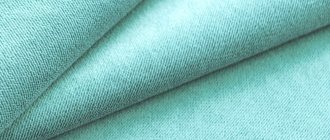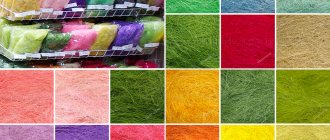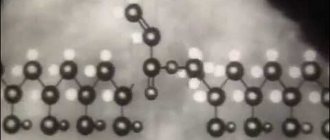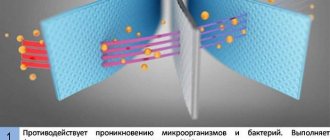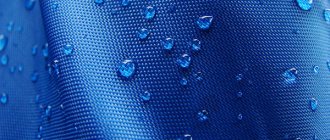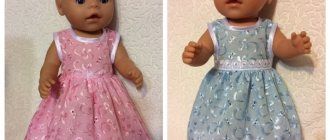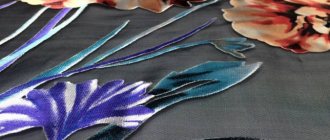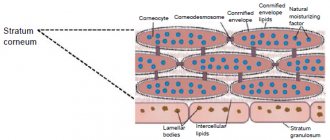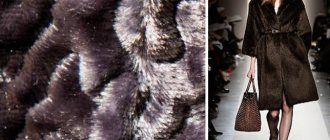The production of cotton wool is a rather labor-intensive and costly business, so you should carefully weigh the pros and cons before organizing such a business. The initial minimum costs will be at least 2.5-3 million rubles, but they will pay off with proper organization of activities in a fairly short period of time - somewhere within a year.
Cotton wadding
Most of this fibrous mass is imported to Russia from leading cotton producing countries: India, China, Pakistan, USA, Uzbekistan, Brazil. Cotton wool is made from raw materials obtained after processing the fruits of the shaggy cotton plant. When the fruit of the plant ripens, the capsule opens. Inside it is a soft white fiber with seeds.
It is collected, packaged and delivered to the cotton gin, where the fibers are separated from the seeds and sorted according to size. Those that have a length of 2-2.5 centimeters are used for making fabrics, and shorter ones are used for the production of cotton wool.
Where did the word "cotton wool" come from?
There are several versions of the origin of the well-known word “cotton wool”. According to the first version, this word came into the Russian language from the Japanese language in the seventeenth century - this was greatly facilitated by well-developed trade relations between Japan and Russia. Around the same period, words such as pollock, iashi and sakura were also borrowed from the Japanese language. And the second version, put forward by M. Vasmer, says that the word “cotton wool” came from the German language (from the word Watte), into which it in turn came from the Arabic language (from batin (“lining”) or wadda).
Raw Material Options
Fiber mass can be made not only from cotton, but also from flax and wool. In terms of consumer qualities, flax wool is closer to cotton wool, but it is less common. There is also a fibrous mass made from a mixture of viscose and cotton. Viscose is one of the first artificially produced fibers; it is obtained by processing natural cellulose. It is highly hygroscopic (the ability to absorb moisture from the air), however, both manufacturers and consumers prefer natural materials because they are less allergenic.
The production of cotton wool from wool and cotton follows the same technological scheme. To produce cotton fiber, cotton of a grade no higher than fourth is selected, and waste from the primary processing of raw materials and unspun waste are also used.
The most suitable is considered to be elastic, low-number cotton, similar in texture to wool. But wool wool is made from pure natural fiber (sheep, camel, goat wool) or artificial fiber with the addition of cotton.
Raw materials for production
Content:
- Raw materials for production
- Quality requirements
- How to obtain sterile material
- Technological process
Despite the fact that most people still believe that they use only cotton wool, this is far from the truth. Today its production has stepped forward, using some other components as a basis.
The general processing algorithm remains identical in any case, because in most cases you still have to lay cotton fiber for the “foundation”. But now viscose variations or mixed types are often found.
Just a few decades ago, each manufacturer was subjected to strict inspection by the relevant services. They were prohibited from using various additives. Since then, many consumers have gotten it into their heads that cotton wool is simply specially processed cotton. But current standards allow replacing part of the composition with synthetic or other natural components.
From the point of view of the developers of such a strategy, this makes it possible to significantly reduce the cost of production, which is why its wholesale price will be insignificant. For the most curious, experts suggest purchasing several bags of this material from different brands, and then comparing their structure at home. Typically, packaging on the outside does not reveal comprehensive information about the composition of the contents. To find out the details, you have to read the fine print on the back of the package. And some unscrupulous manufacturers prefer to keep silent about some important consumer information. They will be revealed only by a detailed study of the texture of the contents of the bag.
In total, there are only three versions of the classification for the given question:
- cotton;
- viscose;
- regenerated.
The first version is easy to distinguish by self-explanatory signs. We are talking about long fibers, as well as white color with a yellowish tint. The texture includes small peas.
The second modification is distinguished by its snow-white color, which sometimes gives off a hint of blue. When you shake the contents of such a bag, dust will fly. If you hear a creaking sound when you press on the roll, this is almost always an indication that it is not natural.
Typically, manufacturers use optical brighteners to achieve the ideal color palette, among which dioxin is in first place in popularity. It is considered one of the most potentially dangerous carcinogenic substances.
Regenerated analogues are created from recycled materials. This is clearly evidenced by the presence of threads, which are waste from textile production. Many people are interested in what happens if you shake the roll. It will also cause dust to fly away, just like when testing a viscose alternative. The color can be either pure white or with a slight bluish tint. It is usually supplied in rolls or large bales, and is used in a rather narrow range of areas of use.
The so-called kip variation is considered separately. This is a special surgical cotton wool, which can sometimes still be found in cosmetologists' offices. A distinctive characteristic of this proposal is the complete absence of various additives, synthetic components such as dyes or chemical bleaches.
This precaution pays off due to the fact that the product is hypoallergenic. But it’s unlikely that you can simply buy it at a pharmacy. Hospitals and clinics order it directly from the manufacturer in large quantities.
Necessary equipment
Creating your own cotton wool production is not so easy. You will need separate premises for warehouses and a workshop, and special equipment. The line for processing cotton fluff, low-grade fiber, and cotton waste includes devices such as a feeder, a condenser, an inclined cleaner, a control station, bunker cotton machines, a solid particle cleaner, air ducts, and filters.
On the secondary market, the price of such a line will average 700-750 thousand rubles. If you want to buy new devices, then prepare at least 1.2-1.5 million rubles. Yes, not cheap! But such a raw material processing line can be serviced by only three people per shift.
To make products from cotton wool you will need separate equipment. To produce cotton pads and sticks, you will need machines with automatic transportation, functions for cutting sheets, stamping and transporting waste, drawing, embossing and an automatic dispenser.
Production of ordinary cotton wool
The fibrous mass used for sewing clothes differs from that used in medicine, both in terms of raw materials and production technology. Ordinary cotton wool is made from clogged waste - waste generated during the processing of textile fibrous materials. First, they are cleared of debris on a dusty top. High-stiffness fibers are pre-split using multi-drum pluckers. Then the raw materials are loosened, mixed and formed into canvases using special equipment.
The basis of the canvases is made up of shapeless fibers, which the roller carding machine turns into cotton wool with a certain structure and thickness. The finished mass is inspected for defects, pressed and packed into bales of forty to fifty kilograms. In this form, the products are supplied to furniture and clothing factories.
Clothes wool.
According to the amount and type of impurities, cotton wool is divided into: Lux, Prima, Sewing.
Cotton wool Lux is the purest, impurities 2.6%, elasticity 67%, density only 22 kg/m3.
Vata Prima is a slightly lower grade, impurities 5%, elasticity 65%, density 23 kg/m3.
Sewing wool - made from cotton fluff and waste, impurities 7%, elasticity 60%, density 25 kg/m3.
Furniture wool is similar in composition to sewing wool. Furniture wool is characterized by tarnishing (the presence of knots and fiber defects in the wool that could not be ruffled).
Medical cotton wool is the purest product. It is divided into:
- ophthalmic,
- household hygiene,
- surgical.
Manufacturing of medical cotton wool
Such production has significant differences. The raw materials are first loosened and cleaned using a special loosening and cleaning apparatus. After this, it is boiled under pressure in alkali (at a temperature of no more than 130 degrees) and treated with sodium hyposulfite. As a result of this treatment, the physical structure of the fibers and their color change.
As a result of the removal of pectin and nitrogenous substances, the raw material loses its natural yellowish tint and becomes white, and also acquires characteristic properties, the main one of which is hygroscopicity. Manufacturers of medical cotton wool must pay special attention to the quality of their products, because they are used in medical practice and must be hygienic and sterile.
After carrying out the described actions, the fibers are processed in the same way as in the manufacture of ordinary wool. But the work doesn't end there. At the last stage, the products are sterilized under pressure up to three atmospheres and at a temperature of 125 degrees. It is then packaged and sent to warehouses.
How to obtain sterile material
If you want to create temporary compression garments with your own hands, then use elastic bandages and non-sterile cotton wool. This product is great for situations where the default is not for the material to touch an open wound surface.
The biggest difference between a sterile and non-sterile combination is the mandatory procedure for drying the raw materials in a special oven. This is how it turns out to destroy various pathogenic microorganisms in a short time. Then the cleaned and disinfected consumable can be applied even to open wounds without fear of possible infection.
The non-sterile solution does not require auxiliary sterilization and is sent to the packaging department immediately after initial processing. At the same time, the density of the two representatives is practically no different.
The non-sterile combination is suitable for the following purposes:
- medical;
- cosmetological;
- hygienic.
Based on the presented view, dressing parts are then created in production, and are also used during manipulations related to the beauty industry in aesthetic medicine centers. Discs, balls, and sponges developed on their basis are then positioned as assistants for face and body care at home.
The use of non-sterile material is allowed only in situations where the risks of infection are reduced to zero. Consumers like it due to its relatively low cost and ability to absorb large amounts of liquid in a matter of seconds.
If you take a couple of minutes to study the instructions, you can also find out whether chlorine was added to the composition as a bleach. Its absence is a ticket to non-occurring skin irritation. But if a person swallows a piece of a ball or disk without exposure to chlorine, you should still seek advice from a specialist.
Moreover, this must be done as soon as possible in order to avoid possible negative developments and related complications.
Sterile specimens are certified and must also undergo steam or chemical sterilization. The result worked well in the following situations:
- production of dressings, which will then come into contact with an open wound surface or burn marks;
- production of dressing material applied over the area treated with an antiseptic;
- if necessary, prevent even the slightest percentage chance of infection.
Read also: Is it possible to drink alcohol after taking Phenibut?
This cotton wool has a uniform structure, as well as a soft neck and a uniform color palette without blue stains, because the attraction of any types of impurities is not allowed here. Sorption properties are significantly increased.
Making cotton swabs
You can immediately sell part of the received medical cotton wool, and use part for the production of medical products, for example, cotton swabs. In medical practice, in cosmetology, and in everyday life (when you need to clean hard-to-reach places), they are used quite widely.
For cosmetic purposes, by the way, you can make special sticks with one end slightly pointed. Using it, it is very convenient, for example, to outline the contours of the eyes, lips, or remove excess polish from nails. The second end of the product should have a flat, round shape. It can be used as an applicator when applying eye shadow.
Technological process
The production of cotton swabs begins with the production of their base from polyethylene (propylene can also be used) on special machines that blow out 500-2000 units of product per minute. These same machines wind cotton wool onto a plastic base.
For this purpose, the cotton wool is divided into four strips. They are very thin, a meter weighs only about one or one and a half grams. The tape is passed through a funnel, which gives it volume, and is wound onto a reel in this fluffy form. To speed up the production process, tapes are supplied to the machine from two reels at once. The machine cuts the cotton fibers and winds them around the preheated ends of a plastic base.
The plastic melts when heated, and when cooled, it adheres well to the winding. If you use a different base, for example, when making wooden sticks, you will have to glue the cotton wool to the ends with glue, and this, of course, will increase the cost of production.
An antibacterial solution is applied to finished products - this is the last stage of production. But we still need to sort out the defective products. Of course, doing this manually is problematic. Therefore, automatic sensors are used.
If you use faulty or cheap equipment, then the packages that end up in the hands of consumers may contain a large number of defective products, and this, as you yourself understand, will negatively affect your reputation. This is why product quality should be taken very seriously. Samples of cotton swabs should be sent to a laboratory to verify the sterility and effectiveness of the applied antibacterial solution.
Production of cotton pads
Such products are also used in medicine and cosmetology. Usually their surface is made in relief for ease of applying ointment or some other product to the skin. Unlike ordinary cotton wool, when wetted the disc does not change its shape.
The products are made from bleached cotton. First, the raw material is placed into a feeding mechanism, then into a baking powder, where the cotton is separated into individual fibers. After this, it is sent to a carding machine with large drums, where the fibers are combed out and formed into a batt. Several of these canvases are layered and compressed under pressure.
The higher the quality of a product, the more cotton wool was used in production. The compressed layers are then passed through a special apparatus for longitudinal cutting into narrower strips. These, in turn, are passed through a machine that applies a textured pattern to the surface. This step can be skipped; the discs do not necessarily have to have a textured surface, however, it is believed that the consumer properties in this case will be reduced.
The resulting tapes are sent to a cutting machine, which cuts out the pads of the required shape (by the way, not necessarily round). At the final stage, the cotton pads are packaged in plastic bags using special equipment.
Non-standard ways to use cotton wool
- To prevent mold growth. A cotton swab is moistened in some chlorine-containing solution, after which it is used to treat moldy surfaces. And another exactly the same tampon is left in the place where the fungus has formed.
- To protect feet from corns and calluses. If you are “lucky enough” to purchase very uncomfortable shoes, in order to avoid rubbing your feet, it won’t hurt to make small pads out of cotton wool and place them under your feet.
- To freshen the air. In this case, you will need not only cotton wool, but also a decorative glass bottle with holes in the lid, as well as your favorite essential oil. Cotton wool moistened with essential oil is placed in a bottle, and you can enjoy your favorite aroma! By the way, its intensity can be adjusted by decreasing or increasing the holes in the lid.
- To eliminate unpleasant odors in the refrigerator. This method is in many ways similar to the method described above, only the essential oil for eliminating unpleasant odors in the refrigerator should be chosen with a light and unobtrusive aroma - after all, food is stored in the refrigerator! The best option would be various citrus flavors: grapefruit, orange or lemon.
- To extend the life of rubber gloves. It's no secret that rubber gloves most often tear at the fingertips. To avoid such troubles, it doesn’t hurt to put small pieces of cotton wool into each finger, and the gloves will be reliably protected from premature damage!
Mineral wool production
Such products have a completely different purpose and are manufactured using completely different equipment. It is used for the production of sound and heat insulating products or as a thermal insulation material in industry and construction. The raw materials are glass, blast furnace slag melts or igneous rocks.
Composition of mineral wool
Each manufacturer makes mineral wool using its own technology, so its composition and quality characteristics may differ:
- The material is based on a variety of rocks. They mainly use metal processing products, which include carbonate rocks and gabbro-basalt compounds. Various additives are also added. The ratio of rocks and additives in mineral wool is 9:1;
- Bentonite clay and phenolic resins are used as a binding component;
- The almost finished insulation is covered with thin paper. Typically, a combination of aluminum or polyethylene with kraft paper is suitable for this.
Manufacturing technology
- The coke and raw materials are loaded into the top of the cupola furnace and lowered down to form an alloy.
- Using a centrifugal, blowing or combined method, a stream of liquid melt is split into fibers.
- In the deposition chamber, a mineral carpet is formed from individual fibers, then the connecting elements are dried and hardened.
Perhaps the most widely used type of mineral wool is stone (basalt). The technology of its manufacture is similar to the work of a volcano. The production of basalt wool is carried out in a furnace at a temperature of 1500 degrees. First, a fiery liquid alloy is made from rocks, then it is drawn into fiber and coated with a binder. Next, the carpet is heat treated and cut into products of the required sizes.
Stone wool.
The starting material for the production of stone wool is rocks, mainly of volcanic origin. These rocks are melted in a special melting furnace at a temperature of 1400 – 1500 °C. The melt then enters centrifuges, where rotating wolves break the molten mass into fine fibers. Here, the resulting fibers are processed with binding components, then a powerful air stream throws the resulting fibers into a special chamber, where the fibers are deposited, forming a kind of carpet of the required size.
The thickness of stone wool fibers is from 3 to 5 microns, length up to 16 mm. Density from 30 to 220 kg/m3.
Advantages.
- Has good thermal conductivity: 0.035-0.045 W/m;
- Good sound absorption;
- Does not burn and has high heat resistance. Operating temperature range from -180°C to 700°C.
- Durable and resistant to deformation, does not shrink during the entire service life;
- Non-hygroscopic and repels moisture well;
- Chemically neutral and environmentally friendly;
- The fibers of stone wool are not split, which makes it easier to work with compared to glass wool or slag wool. Mineral wool installation work does not require special skills.
Flaws.
The disadvantages of stone wool include the presence of binding components based on phenol-formaldehyde resins, which can lead to the release of phenol. But phenol begins to be released only when mineral wool is heated to the maximum permissible temperatures (above 700 ° C); under normal conditions, the binding components are neutral.
Insulation materials based on mineral wool are used for thermal insulation of roofs and internal walls, ceilings and partitions, floors of buildings and panel structures.

